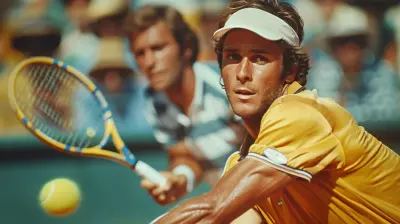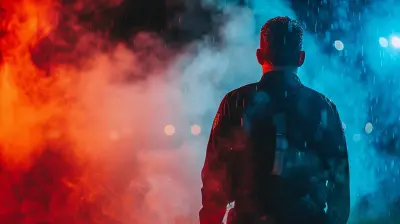Tennis Fashion: A Look at Iconic Outfits Over the Decades
7 October 2025
When you think of tennis, you might picture thunderous serves, epic rallies, or maybe Serena Williams smashing a winner down the line. But there’s another side of the sport that’s just as captivating—tennis fashion. Over the decades, tennis courts have been more than just a battleground for athletes; they've been runways for some of the most iconic outfits in sports history.
Tennis fashion isn't just about looking good. It's about making statements, breaking barriers, and rewriting the rules—sometimes literally. From vintage whites to bold neon ensembles, the evolution of tennis apparel reflects not only the shifts in style but also the transformations in society, gender norms, and athletic performance standards.
Grab your racquet and let’s serve an ace down memory lane.![]()
The Early Days: Strict Whites and Social Rules (1800s–1920s)
Okay, let’s rewind all the way to the beginning.Back in the late 1800s when lawn tennis became a thing, the fashion was... let’s say, not performance-friendly. Men sported full-length trousers, long-sleeved shirts, and even neckties. Imagine trying a diving volley in that gear!
And women? They had it even tougher. Victorian-era tennis fashion required long skirts, heavy petticoats, and corsets. Yes, corsets on a tennis court. Comfort and breathability clearly weren’t top priorities.
But the all-white dress code emerged not just as a style choice—it was a symbol of status and class. White didn’t show sweat stains and was considered elegant. Wimbledon still holds on to this tradition even today.
Though functionality was lacking, this era set the stage for what would become a dynamic fusion of fashion and sport.![]()
1930s–1940s: The Birth of Functional Elegance
Enter the 1930s, and things started to shift. Athletes began pushing for more comfort and freedom of movement. French tennis legend Suzanne Lenglen rocked the boat—big time. She ditched the corset and wore knee-length skirts and short sleeves. Scandalous? At the time, yes—but revolutionary too.Lenglen’s look wasn’t just iconic, it was liberating. And as women around the world watched her dominate while looking utterly fabulous, tennis fashion slowly but surely moved toward practicality.
Men followed suit. Slacks got shorter, shirts got lighter, and the tie was finally left in the locker room. It was the dawn of mixing elegance with athleticism—without sacrificing performance.![]()
1950s: The Golden Era of Tennis and Tailored Chic
The '50s often gets labeled as the “golden era” of tennis—and not just because of the epic rivalries. This decade brought us style icons like Maureen Connolly and Tony Trabert. Fashion-wise, it was all about tailored perfection.Women started wearing shorter, pleated skirts paired with crisp sleeveless polos. The look was classy, but now it was also playable. Think flowy skirts that twirled with every backhand—effortlessly chic.
Men? Think Fred Perry. Yep, the same guy behind the fashion label. He rocked short-sleeved polos and high-waisted shorts that became the standard for years.
This was also the era where tennis whites became not just traditional—but cool.![]()
1960s–1970s: Swinging Skirts and Breaking Rules
The '60s and '70s shook things up—both culturally and on the tennis court.Colors started creeping in. It began subtly—a colored trim here, a colored shirt there. But by the '70s, tennis fashion was embracing boldness. Psychedelic patterns, stripes, and pastels made their debut. The conservative white was slowly being challenged.
Who could forget Billie Jean King? Not only a champion for gender equality, but also a fashion trailblazer. Her bold glasses and sporty outfits made her stand out on and off the court.
And don’t even get us started on Björn Borg. With his headband, tight shorts, and flowing hair, he embodied the rock-star athlete vibe of the '70s.
Then came Chris Evert and her signature bracelet—now famous as the “tennis bracelet.” One accidental piece of bling turned into a style staple named after her!
1980s: Neon, Glam, and Over-the-Top Statements
If there’s one word to describe tennis fashion in the '80s, it’s loud.The '80s were all about making a statement. Neon colors, bold patterns, and oversized everything. Andre Agassi? He kicked down the door with his acid-washed denim shorts (yes, really), flowing mullet, and colorful outfits. He didn’t just play tennis—he performed.
Steffi Graf and Martina Navratilova brought feminine power to the court with sporty, dynamic outfits that still looked sleek and sharp. This was the era when athleticism met attitude.
And let’s not forget the rise of sponsorships and branding. Logos started popping up on polos, skirts, and visors. Brands were no longer just making clothes—they were setting trends.
1990s: Minimalism Meets Attitude
After the flashy '80s, the '90s brought a more toned-down vibe—but with plenty of swag.Think clean lines, solid colors, and simple silhouettes. Pete Sampras and Monica Seles weren’t just dominating the baseline—they were also showcasing a more grounded, no-nonsense style of dress.
But then came Venus and Serena Williams, and everything changed.
The Williams sisters brought power, poise, and unapologetic fashion to tennis. They wore beads in their hair, matched outfits, and turned every match into a fashion moment.
They also signaled the start of a new vibe—where fashion was used as self-expression, not just function.
2000s: Tech-Driven Fashion and Custom Creations
The 2000s saw major developments in fabric technology. Moisture-wicking, stretchable, and breathable materials revolutionized tennis outfits. What used to weigh players down now helped them move freely.Rafael Nadal made headlines not just with his devastating topspin—but with that sleeveless shirt and capri combo. Love it or hate it, it was daring.
Maria Sharapova served elegance with perfectly tailored dresses, often designed in collaboration with high-end fashion brands. She brought runway fashion onto the court and made it look effortless.
Meanwhile, Serena Williams continued to push boundaries—remember the denim skirt or the black catsuit at the US Open? Each outfit sparked conversation, debate, and admiration.
2010s: Boldness, Innovation, and Social Statements
The 2010s were the decade of fearless fashion.Players began using their outfits to support causes or showcase individuality. Naomi Osaka wore masks with social justice messages. Roger Federer debuted Uniqlo gear after years with Nike, signaling a shift in the power balance of fashion sponsorships.
Designers teamed up with athletes more than ever. Stella McCartney collaborated with Adidas for innovative, eco-friendly designs worn by Garbiñe Muguruza and Caroline Wozniacki.
And yes, that black catsuit Serena wore in 2018? Banned by the French Open, but it sparked a massive conversation about race, gender, and freedom of expression in sports.
Athletes were no longer just following fashion—they were leading it.
2020s and Beyond: Sustainability, Street Style, and Gender-Neutral Vibes
We’re now in a time where boundaries continue to blur.Sustainability is becoming a big buzzword. Brands like Nike and Adidas are using recycled materials, and players are asking for more eco-conscious options.
Style-wise, the line between on-court and off-court fashion is thinner than ever. Coco Gauff rocks a sporty crop top one day, a Met Gala gown the next. Tennis stars are becoming fashion influencers in their own right.
Gender-neutral fashion is also gaining traction. Unisex designs are no longer niche—they’re mainstream. Athletic wear is moving toward inclusivity, both in design and marketing.
And let’s not forget the rise of custom kits. Players like Nick Kyrgios and Emma Raducanu are working closely with fashion houses to create outfits that are just as unique as their personalities.
Why Tennis Fashion Matters
You might be thinking, “Okay... but isn’t it just clothes?” Not quite.Tennis fashion is a mirror. It reflects the times, challenges stereotypes, and gives players a voice beyond their game. From Billie Jean King’s functional gear to Serena Williams’ armor-like outfits, what athletes wear isn’t just about performance—it’s about identity.
It’s about showing the world who you are without saying a word.
And honestly, isn’t that what fashion’s all about?
Final Thoughts
Tennis fashion has come a long way—from corsets and cotton to capris and catsuits. Each decade brought its own vibe and left its mark on the sport we love.Whether you're a die-hard fan or just someone who appreciates a killer outfit, it’s hard not to admire how tennis embraces change—sometimes faster than a Nadal forehand.
So next time you're watching a match, take a second to check out what the players are wearing. Because in tennis, fashion always has a story to tell.
all images in this post were generated using AI tools
Category:
TennisAuthor:

Umberto Flores
Discussion
rate this article
1 comments
Maya Simon
Tennis fashion transcends mere aesthetics; it encapsulates each era's cultural pulse, reflecting athletes' identities and the sport's evolution, reminding us that style can inspire performance.
November 3, 2025 at 1:23 PM

Umberto Flores
Thank you for your insightful comment! Tennis fashion truly is a fascinating reflection of culture and identity, showcasing how style and performance intertwine throughout the sport's history.


